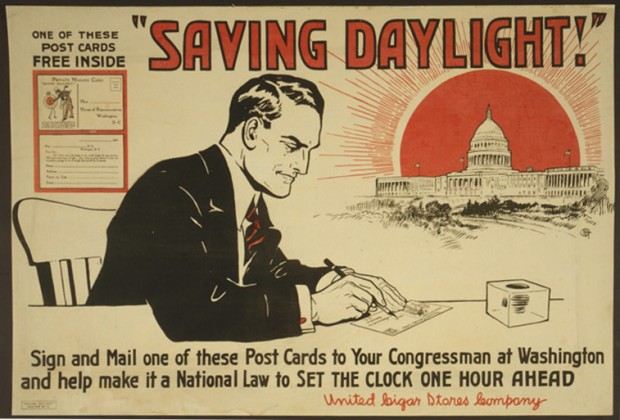An iconographic and text archive related to communication, technology and art.
☛ Library of Congress Prints and Photographs Division Washington: “‘Saving daylight!’ Sign and mail one of these post cards to your congressman at Washington and help make it a national law to set the clock one hour ahead.”, lithograph, color, 67 x 99 cm. Public domain.
Poster showing a man writing a postcard, with the U.S. Capitol in the background. To the left are samples of the free postcards that were distributed.
Further explanation from The New York Times:
Daylight savings time moves an hour of daylight from the mornings to the evenings, by shifting the clock forward by an hour from the traditional schedule during the spring, summer and early fall.
During daylight savings time, the sun reaches its peak at 1 pm instead of 12 pm, and the crack of dawn comes a little later. The idea is to have people up and about during the longer daylight hours, to save energy and increase productivity.
In 2005, Congress expanded daylight savings time, by shifting its start to the second Sunday in March and its end to the first Sunday in November.
In 2012, Daylight Saving Time starts at 2 a.m. on Sunday March 11 for most locations both in Canada and United-States. For more detail see Daylight Saving Time Around the World 2012.
Previously on Aphelis: LOC: “Saving Daylight”, 1918
- By Philippe Theophanidis
- on
- ― Published in Art, Technology
- Tagged: daylight saving, economy, history, lithograph, poster, propaganda, time

